What is HVAC Replacement?
When considering a new HVAC system, understanding the HVAC replacement cost is crucial. Many factors influence the price of replacing your HVAC system, including the size, efficiency, and complexity of the installation. Whether you’re replacing an old air conditioner, furnace, or heat pump, knowing the HVAC replacement cost can help you make an informed decision. In this guide, we’ll break down the various factors that impact costs, provide insight into the average prices, and offer practical tips to save on your HVAC replacement.
Replacing an HVAC system can be a significant investment, but it’s essential for maintaining indoor air quality and comfort. A well-functioning HVAC system provides heating, cooling, and ventilation, ensuring that your living or working space is always at the ideal temperature.
Understanding HVAC Systems and Their Lifespan
HVAC systems typically last between 10 to 20 years, depending on various factors such as usage, maintenance, and the quality of the system itself. Regular maintenance can extend the lifespan of your HVAC system, but as it ages, efficiency tends to decline.
- Cooling Systems (Air Conditioners, Ductless ACs): These systems usually last around 10 to 15 years before they start showing signs of inefficiency. Poor performance and rising energy bills are often early indicators.
- Heating Systems (Furnaces, Heat Pumps): These typically last longer, between 15 to 20 years, though this varies with model type and usage. When a heating system reaches the end of its life, it may require frequent repairs and face difficulty maintaining a consistent temperature.
- Air Ducts and Insulation: Even if your HVAC unit itself is still functional, the air ducts and insulation can degrade over time. When this happens, it could affect the overall efficiency of your system.
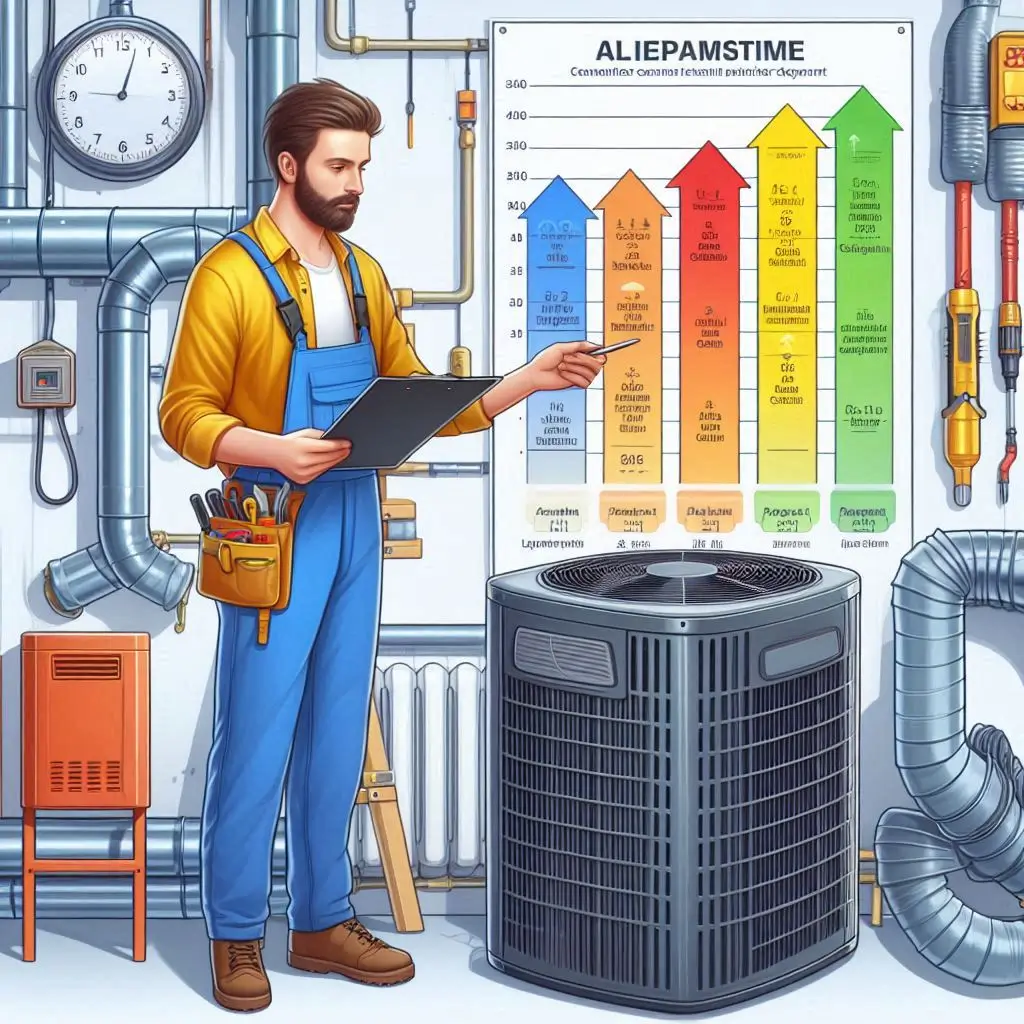
When to Consider HVAC Replacement
There are several signs that indicate it might be time to consider replacing your HVAC system:
-
Age of the System: As mentioned, HVAC systems have a lifespan. If your system is over 10 years old, it may be time to consider an upgrade, especially if it’s causing issues like inefficient cooling/heating or frequent breakdowns.
-
Increased Energy Bills: If you notice a significant rise in energy costs, even after routine maintenance, this could be a sign that your system is no longer operating efficiently. Old HVAC units tend to use more energy to achieve the same results, and replacement may provide substantial savings in the long run.
-
Frequent Repairs: An HVAC system that requires frequent repairs, especially as it ages, can become costly. If repair costs begin to outweigh the cost of a new unit, replacement is likely the more economical option.
-
Inconsistent Temperature: If your HVAC system struggles to maintain a consistent temperature throughout your home or office, it may be time for a replacement. This is especially true if it’s caused by the system’s inability to distribute air properly.
-
Strange Noises or Smells: Unusual sounds like grinding, rattling, or screeching may indicate mechanical failure or worn-out parts. Additionally, unpleasant odors, such as burning smells or musty air, could signal that components need replacement.

Key Factors Affecting HVAC Replacement Costs
The cost of replacing an HVAC system can vary greatly depending on several factors. Understanding these elements can help you make an informed decision about your HVAC replacement.
-
System Size and Capacity: One of the primary cost factors is the size of the system. A larger home or commercial space requires a more powerful HVAC system, which naturally costs more. Sizing the system correctly is crucial for ensuring optimal efficiency and comfort.
-
Type of HVAC System: Different systems come with different price points. For example:
- Central AC Systems: These tend to be more expensive because they require both the unit and ductwork installation.
- Ductless Mini-Split Systems: These are more affordable upfront but may require professional installation and several units depending on the number of rooms.
- Heat Pumps: A popular option for moderate climates, heat pumps are typically more expensive but provide both heating and cooling capabilities.
-
Brand and Model: The brand and model you choose significantly affect your costs. High-efficiency, premium-brand systems often cost more upfront but can save you money in the long term through energy savings.
-
Labor Costs: Installation labor can account for a large portion of the total cost. The complexity of installation, such as adding new ductwork or removing an old system, can also increase the overall price.
-
Additional Components: If your HVAC system needs additional components, such as new ductwork, air purifiers, or UV light systems, this will increase the cost. Some homeowners opt for upgrades that improve the air quality or efficiency of their systems.
-
Energy Efficiency Ratings: Systems with higher energy efficiency ratings (SEER or HSPF) may come with higher upfront costs, but they often result in lower energy bills. Investing in a high-efficiency model can lead to long-term savings.
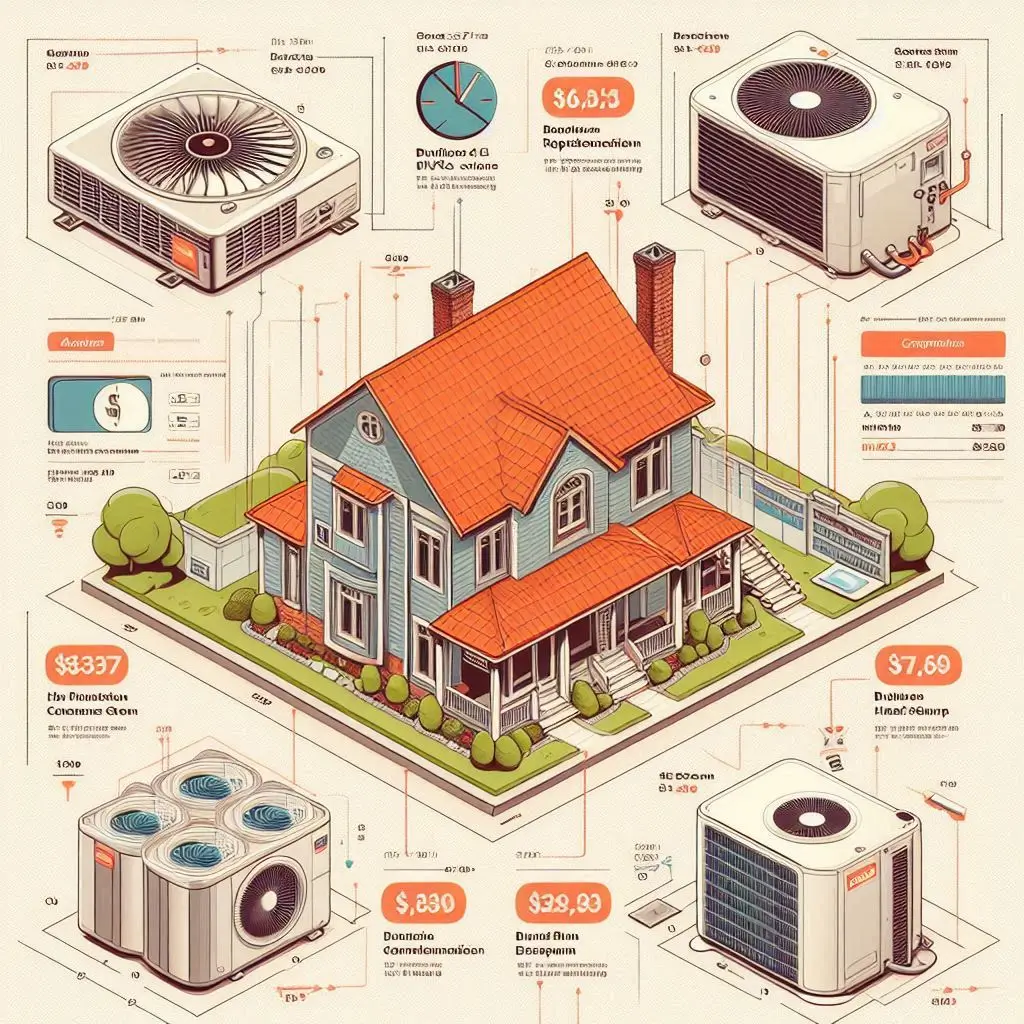
Factors That Affect HVAC Replacement Costs
Replacing an HVAC system is a major investment that requires careful consideration of various factors. Understanding the elements that influence HVAC replacement costs will help you make informed decisions, avoid unexpected expenses, and ensure you choose the best system for your needs. Here are some key factors that significantly affect the overall cost of HVAC replacement.
Size and Efficiency of the Unit
The size and efficiency of an HVAC unit are among the most important factors that determine its cost. A system that is too small will struggle to heat or cool your home efficiently, while a system that is too large can waste energy and drive up utility bills. Here’s a breakdown of how size and efficiency impact HVAC replacement costs:
-
Size: The size of the unit is typically measured in tons (1 ton = 12,000 BTUs). Larger homes or commercial buildings require a larger unit to adequately heat or cool the space. The right-sized unit ensures the system operates efficiently and lasts longer.
- Small Systems: For smaller homes, a 1.5 to 2-ton unit may suffice, with costs ranging from $2,000 to $3,500 for installation.
- Larger Systems: For larger homes or buildings, systems from 3 to 5 tons are necessary, and these systems can cost between $3,500 to $8,000 or more, depending on additional factors.
-
Efficiency: HVAC systems are rated by their SEER (Seasonal Energy Efficiency Ratio) or HSPF (Heating Seasonal Performance Factor). A higher SEER or HSPF rating indicates better energy efficiency, meaning the system uses less energy to achieve the desired temperature.
- High Efficiency: Systems with a high SEER rating (15 or higher) typically have a higher initial cost but offer substantial energy savings over time.
- Standard Efficiency: Systems with lower ratings are generally cheaper to purchase but result in higher energy costs in the long term.
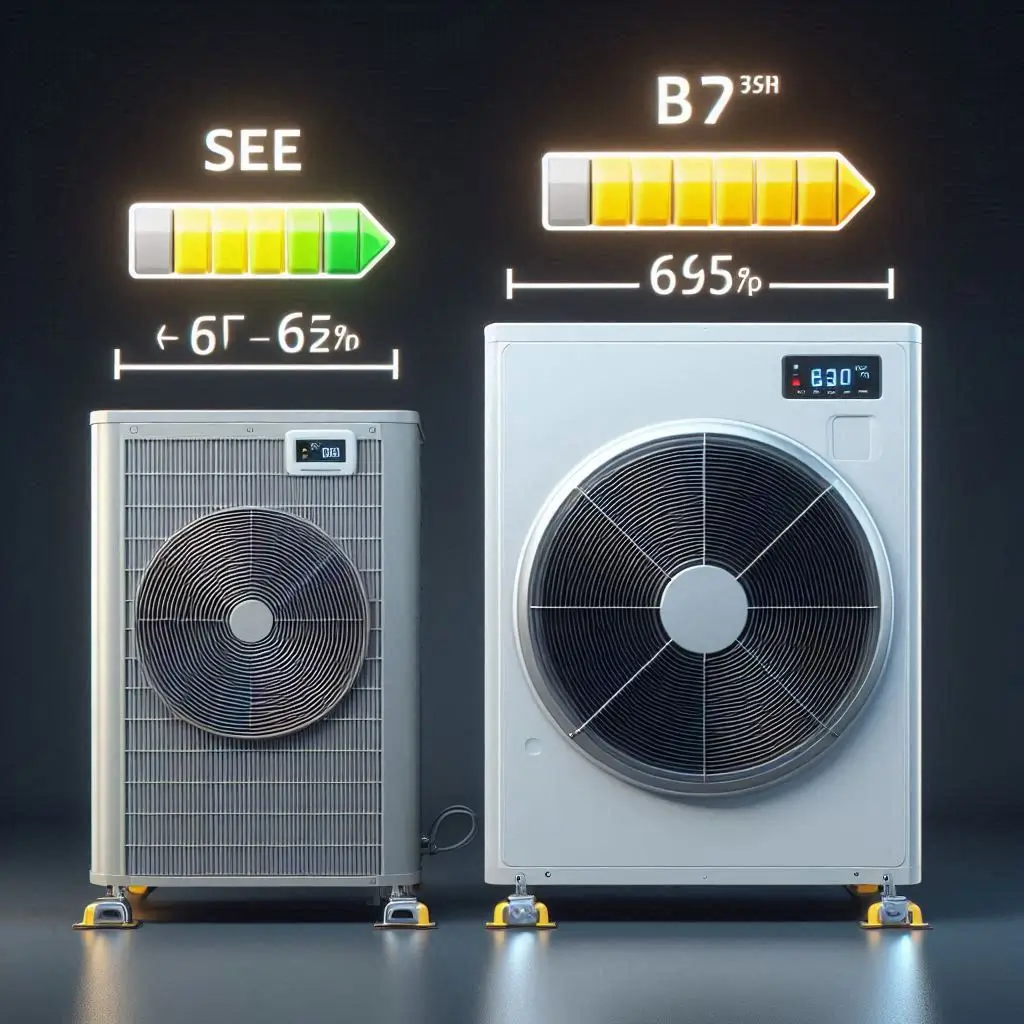
Installation Complexity and Labor Costs
The complexity of the HVAC installation process and labor costs are essential factors that influence the total replacement price. Several elements can make the installation more complex, requiring additional labor and thus driving up the cost:
-
Ductwork Modifications: If the existing ductwork is damaged or inadequate for the new system, it may need to be replaced or upgraded. The complexity of this process can add significant costs to your HVAC replacement. New ducts may cost anywhere from $2,000 to $4,000, depending on the layout and size of the home.
-
System Location: The location of the HVAC system in your home can also impact the labor cost. If the installation requires significant modification to existing spaces (e.g., attic or basement), this can increase both the time and cost for the installation.
-
Electrical Work: Some systems may require upgrades to the electrical system to handle the increased load. This additional work can add $1,000 to $2,000 to your installation costs.
-
Removal of Old System: If you are replacing an existing system, the cost of removing the old unit can add to the overall cost. This is especially true if there is asbestos, refrigerant removal, or other hazardous materials involved.
Labor costs typically range from $50 to $150 per hour, depending on the location and complexity of the installation. The total labor cost for HVAC replacement can vary between $1,000 to $5,000.
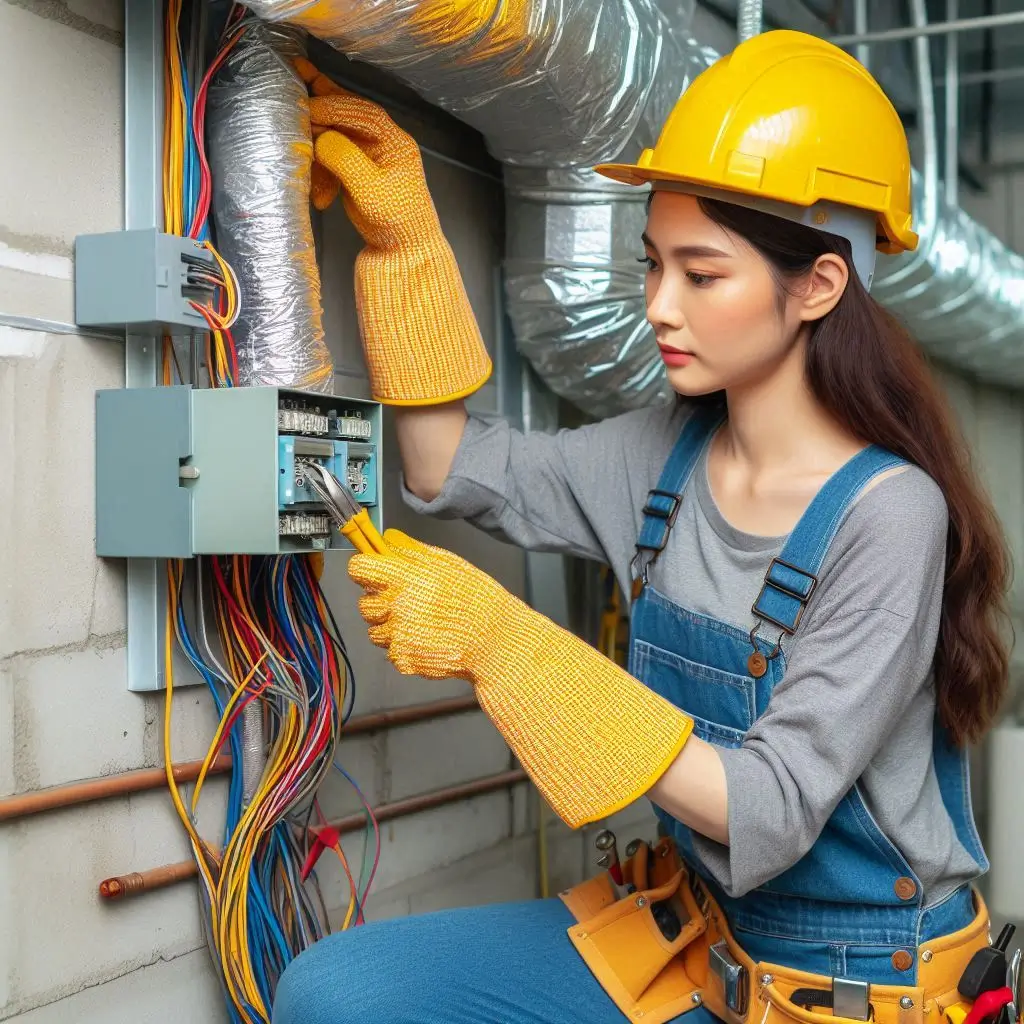
Brand and Model Considerations
The brand and model of the HVAC system you choose can significantly influence the total replacement cost. Not all HVAC units are created equal, and the price can vary based on the features, reliability, and warranty provided by different manufacturers.
-
Brand Reputation: Well-established brands with a reputation for quality and reliability—such as Carrier, Trane, Lennox, and Rheem—often come with a higher upfront cost. However, these brands may offer longer lifespans, fewer breakdowns, and better customer service. Choosing a premium brand often leads to lower repair costs and better overall efficiency in the long run.
-
Model and Features: Within each brand, there are various models with different features, efficiency ratings, and technology. For example:
- Basic Models: Basic models with fewer features may cost less to purchase but can have higher operating costs due to lower energy efficiency.
- High-End Models: Premium models, which may include advanced features such as variable-speed motors, smart thermostats, and superior filtration systems, typically come with a higher price tag but provide better performance and long-term savings.
-
Warranty and Maintenance: Many HVAC manufacturers offer extended warranties for parts and labor, but these warranties often come at an additional cost. It’s important to factor this into your overall budget for replacement. In some cases, paying a little more for an extended warranty can save money on repairs in the future.
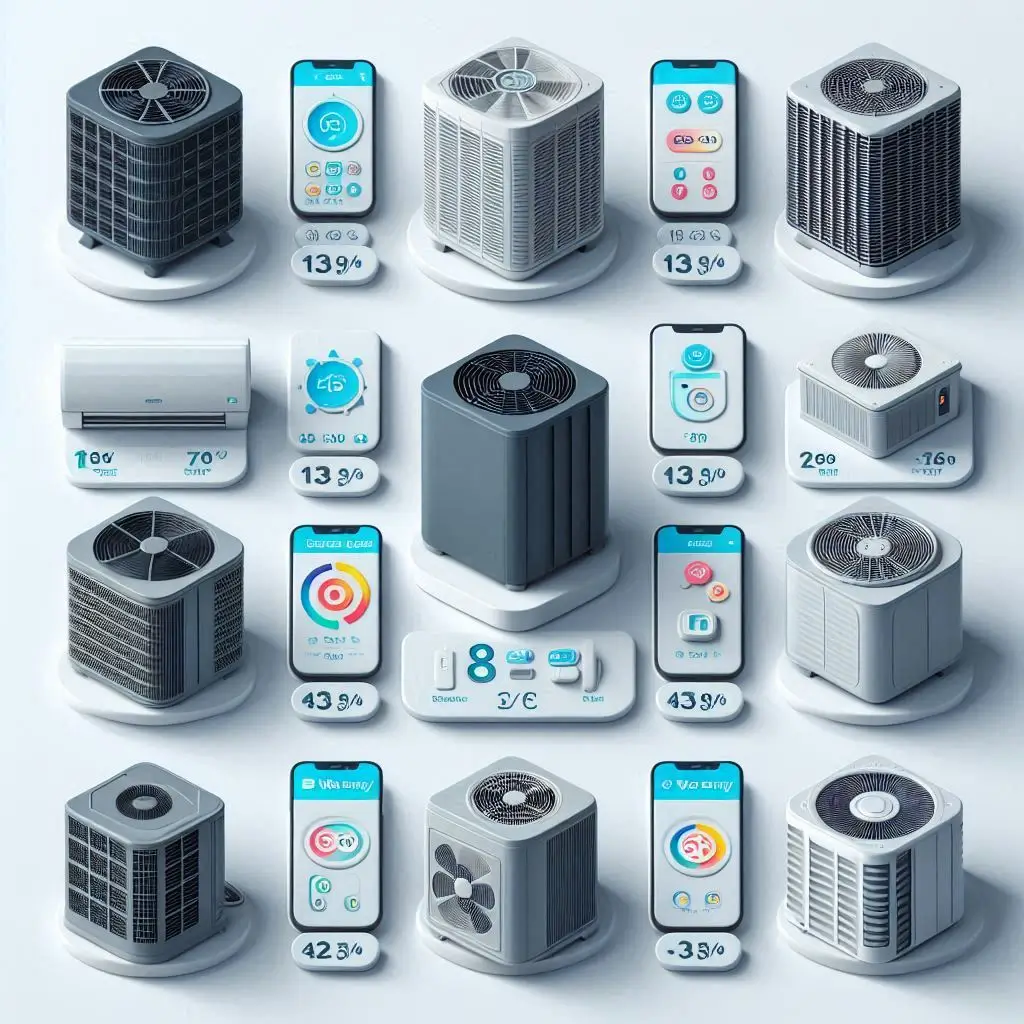
Average HVAC Replacement Cost
Replacing your HVAC system is a significant investment, and understanding the average replacement cost is essential to making a well-informed decision. The total cost of HVAC replacement varies depending on several factors, including the type of system, the size of the unit, installation complexity, and the components involved in the replacement. Below is a breakdown of the typical costs associated with HVAC replacement.
Average Cost Range for Different Types of Systems
The cost of HVAC replacement can vary significantly depending on the type of system you need. Generally, the replacement cost for HVAC systems can range from $3,000 to $10,000 or more. Below are the typical price ranges for different types of HVAC systems:
-
Central Air Conditioning Systems: A central AC system, which is commonly used in homes, can cost between $3,000 to $7,000. This price range includes the cost of the unit, installation, and any necessary ductwork modifications. Higher-end models with greater energy efficiency, smart features, or advanced filtration systems may cost more.
-
Heat Pumps: Heat pumps, which provide both heating and cooling, typically cost between $4,000 to $8,000 for replacement. They are an energy-efficient option for homes in regions with mild climates, offering a year-round solution for temperature control.
-
Ductless Mini-Split Systems: Ductless systems are a popular choice for homes that do not have existing ductwork. The cost for replacing a ductless mini-split system ranges from $3,000 to $7,500, depending on the number of indoor units and the complexity of the installation. These systems are more expensive to install but offer increased flexibility and efficiency, especially for smaller spaces or room additions.
-
Geothermal Systems: Geothermal HVAC systems, which use the earth’s temperature to heat and cool your home, are the most expensive to install. The cost for replacing a geothermal system can range from $10,000 to $30,000. While these systems have high upfront costs, they are highly efficient and can provide long-term savings in energy bills.

Costs of Replacing Different HVAC Components (AC, Heater, Ductwork)
When replacing an HVAC system, various components may need to be replaced or upgraded to ensure optimal performance. The cost of replacing specific HVAC components can vary based on the size of the home, the complexity of the system, and the materials used. Below is a breakdown of the costs for replacing different components:
-
Air Conditioner (AC): The cost to replace just the air conditioning unit (without the heating component) typically ranges from $2,500 to $6,000. This cost includes the purchase of the AC unit and installation. Higher efficiency models with advanced features can push this cost higher.
-
Heater: Replacing the heating component of an HVAC system, whether it’s a furnace or a heat pump, can cost anywhere from $3,000 to $7,500. Gas furnaces generally fall at the lower end of this range, while electric or high-efficiency models will cost more.
-
Ductwork: Ductwork replacement is an additional cost that can significantly increase the overall price of HVAC replacement. If your existing ducts are damaged, inefficient, or inadequate for the new system, you may need to replace them. The cost for ductwork replacement can range from $2,000 to $5,000, depending on the size of the home and the extent of the ductwork that needs to be replaced.
-
Air Duct Cleaning: It’s also essential to have your ducts cleaned if they’ve accumulated dust, mold, or other contaminants. While this isn’t part of the HVAC replacement, it can improve the system’s efficiency. The cost for professional air duct cleaning ranges from $400 to $1,000.
-
UV Light Installation: UV light systems are designed to kill bacteria, viruses, and mold that can accumulate in your HVAC system. Adding UV light installation to your HVAC replacement project can cost between $500 to $2,000.
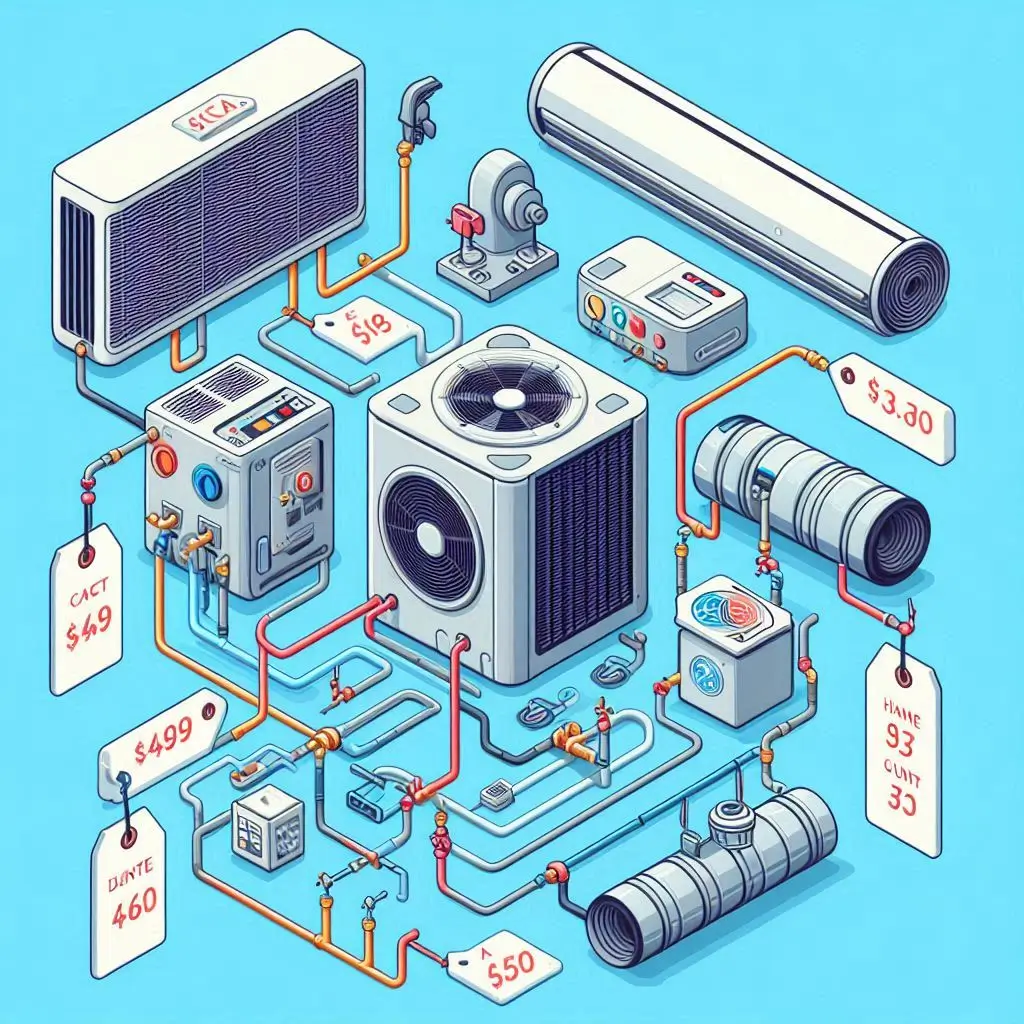
How to Estimate Your HVAC Replacement Costs
Estimating the cost of HVAC replacement involves several steps, as there are many factors that influence the total price. Whether you’re planning to replace an outdated system or you’re experiencing frequent breakdowns, understanding how to estimate HVAC replacement costs can help you make a more informed decision. The right approach to estimating costs involves assessing your home’s needs, the HVAC system’s specifications, and whether you choose a professional installation or attempt a DIY approach.
Getting a Professional HVAC Estimate
Getting a professional HVAC estimate is one of the most accurate ways to determine how much you’ll need to spend on HVAC replacement. Reputable HVAC contractors usually offer free or low-cost estimates that include an evaluation of your current system and your home’s specific heating and cooling needs.
Here’s how the process typically works:
-
Initial Consultation: A licensed HVAC technician will come to your home to inspect your existing system. They will assess the condition of your air conditioner, furnace, ducts, and any other components.
-
Load Calculation: The technician will perform a Manual J calculation, which estimates the heating and cooling load required for your home. This step ensures the new system will be appropriately sized for optimal performance and energy efficiency.
-
System Recommendations: After evaluating your home, the technician will provide a list of recommended HVAC systems. They will consider factors such as system type, energy efficiency, brand preferences, and the complexity of installation.
-
Cost Breakdown: The estimate will include the total cost of the system, labor, installation, and any additional components or modifications needed. This helps you understand the total investment required for your HVAC replacement.
While a professional estimate may come with a cost, it is often worth the investment to ensure you get an accurate cost and avoid surprises during installation.

DIY vs Professional HVAC Replacement: Cost Comparison
When considering HVAC replacement, one of the primary decisions homeowners face is whether to tackle the replacement themselves or hire a professional contractor. While the DIY route may seem appealing for its potential to save money, there are several important factors to consider before making this decision. Below is a comparison of the costs and benefits associated with DIY and professional HVAC replacement.
DIY HVAC Replacement Costs:
-
Equipment Purchase: DIYers must purchase all of the necessary equipment, which includes the HVAC unit, ductwork (if required), refrigerant, wiring, and other tools. Depending on the system, this could cost anywhere from $1,500 to $4,000 for the equipment alone.
-
Labor and Time Investment: One of the biggest challenges with DIY HVAC replacement is the labor involved. Replacing an HVAC system can take several days, depending on the complexity of the installation. If you’re not familiar with HVAC systems, you may end up spending more time troubleshooting or fixing mistakes, which could result in added costs.
-
Permits and Codes: In many areas, HVAC installations require permits and adherence to local building codes. DIYers may need to pay for permits, inspections, and ensure that their work complies with legal requirements. Failing to meet these standards could result in fines or the need for costly repairs later.
-
Warranty Issues: Many HVAC manufacturers require professional installation to honor the warranty. DIY installation may void the warranty, leaving you responsible for any future repairs or replacements.
Professional HVAC Replacement Costs:
-
Labor and Expertise: Hiring a professional HVAC technician comes with the benefit of expert knowledge. While professional installation typically costs between $1,500 to $3,000 (on top of the equipment cost), the technician will handle all aspects of the replacement, including the proper sizing of the system, installation, and any necessary repairs or upgrades to the ductwork.
-
Time-Saving: A professional contractor can complete the installation in a fraction of the time it would take a DIYer, typically within a day or two. This reduces downtime without a working HVAC system and minimizes inconvenience.
-
Warranty Protection: With professional installation, you can rest assured that your HVAC system’s warranty will be intact. The technician will install the unit according to manufacturer specifications, ensuring that it remains valid for the duration of the warranty.
-
Long-Term Savings: Although professional HVAC replacement may have a higher upfront cost, the system will likely run more efficiently, potentially lowering energy bills in the long term. Additionally, professional installation reduces the risk of future repairs due to poor installation.
In summary, while DIY HVAC replacement may seem like a cost-saving option, the risks, additional costs, and time investment make professional installation the safer and more efficient choice in most cases.

Ways to Save on HVAC Replacement
Replacing an HVAC system is a significant investment, but there are several ways to save money on the overall cost. Whether you are upgrading an old unit or replacing a broken one, it’s important to explore available savings opportunities. From energy efficiency rebates to financing options, the following strategies can help reduce your upfront costs and make your HVAC replacement more affordable.
Energy Efficiency Rebates and Tax Credits
One of the most effective ways to save on HVAC replacement is by taking advantage of energy efficiency rebates and tax credits. Many states, local utilities, and even the federal government offer financial incentives to encourage homeowners to install energy-efficient HVAC systems. Here are some ways to benefit from these programs:
Federal Tax Credits:
The federal government offers tax credits for purchasing qualified energy-efficient systems. The Energy Star® program, for example, certifies HVAC systems that meet strict energy efficiency guidelines. Homeowners who replace their old HVAC systems with Energy Star® certified units may qualify for tax credits worth up to $500 or more. This tax credit can significantly lower the overall cost of a system replacement.
State and Local Rebates:
Many states and local utility companies offer rebates to homeowners who install energy-efficient systems. These rebates can range from a few hundred dollars to over $1,000, depending on the system and the area. The goal of these rebates is to encourage homeowners to reduce their carbon footprint by upgrading to more energy-efficient systems. To take advantage of these rebates, it’s important to check with local utility companies or visit your state’s energy department website for eligibility and application details.
Utility Company Incentives:
In addition to rebates, some utility companies provide incentives for homeowners who install energy-efficient systems. These programs are often designed to reduce the load on the power grid, particularly during peak demand periods. In many cases, your HVAC contractor can help you apply for these incentives during the installation process, further reducing your out-of-pocket costs.
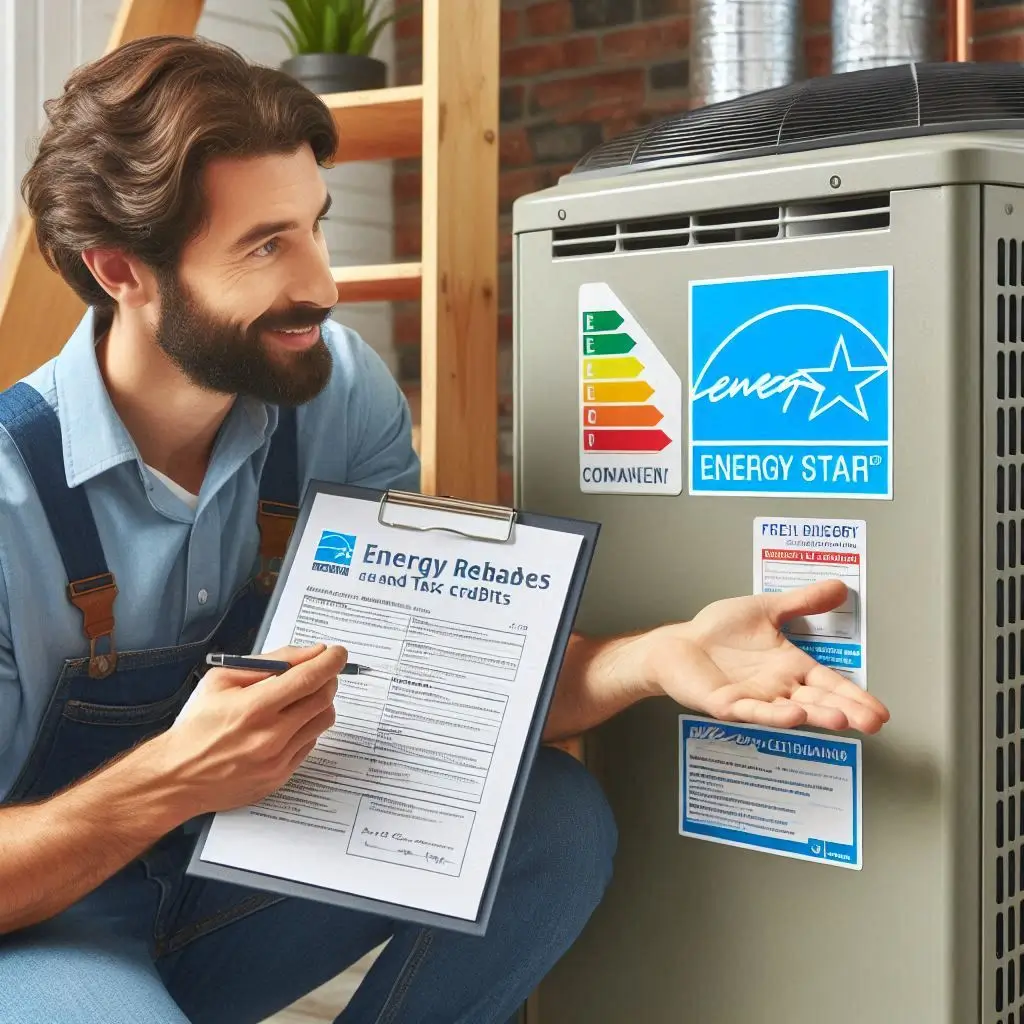
Financing Options and Payment Plans
While tax credits and rebates are great ways to save on HVAC replacement costs, many homeowners may still find the upfront expense challenging. In such cases, financing options and payment plans can be a helpful way to spread the cost of HVAC replacement over time.
0% Interest Financing:
Many HVAC companies and financial institutions offer 0% interest financing for qualified homeowners. This type of financing allows you to purchase a new system and pay it off over a set period (usually 12 to 24 months) without paying any interest. This is a great way to make the initial cost of replacement more manageable while ensuring your system is running efficiently. Be sure to ask your HVAC contractor about any 0% financing offers available at the time of purchase.
Long-Term Financing:
If a shorter-term financing option doesn’t work for you, many companies offer long-term financing options with lower interest rates. Typically, these financing plans can range from 36 months to 10 years, depending on the loan amount and your credit score. Although interest rates apply, these plans give homeowners more flexibility in how they pay for their HVAC system, making it easier to budget for the long term.
Payment Plans:
Some HVAC contractors offer flexible payment plans directly through their companies. These plans allow you to break down the cost of HVAC replacement into smaller monthly payments over an extended period. Payment plans are a good option if you want to avoid a large upfront payment but still want to replace your system promptly. Many contractors provide transparent terms with no hidden fees, so you can be sure about your financial commitment.
Home Equity Loans and Personal Loans:
For those with existing home equity, a home equity loan may be another viable option to finance HVAC replacement. Home equity loans typically offer lower interest rates than personal loans and can be used to cover the full cost of your HVAC system. However, this option does require you to put your home at risk, so it’s important to carefully assess your financial situation before proceeding.
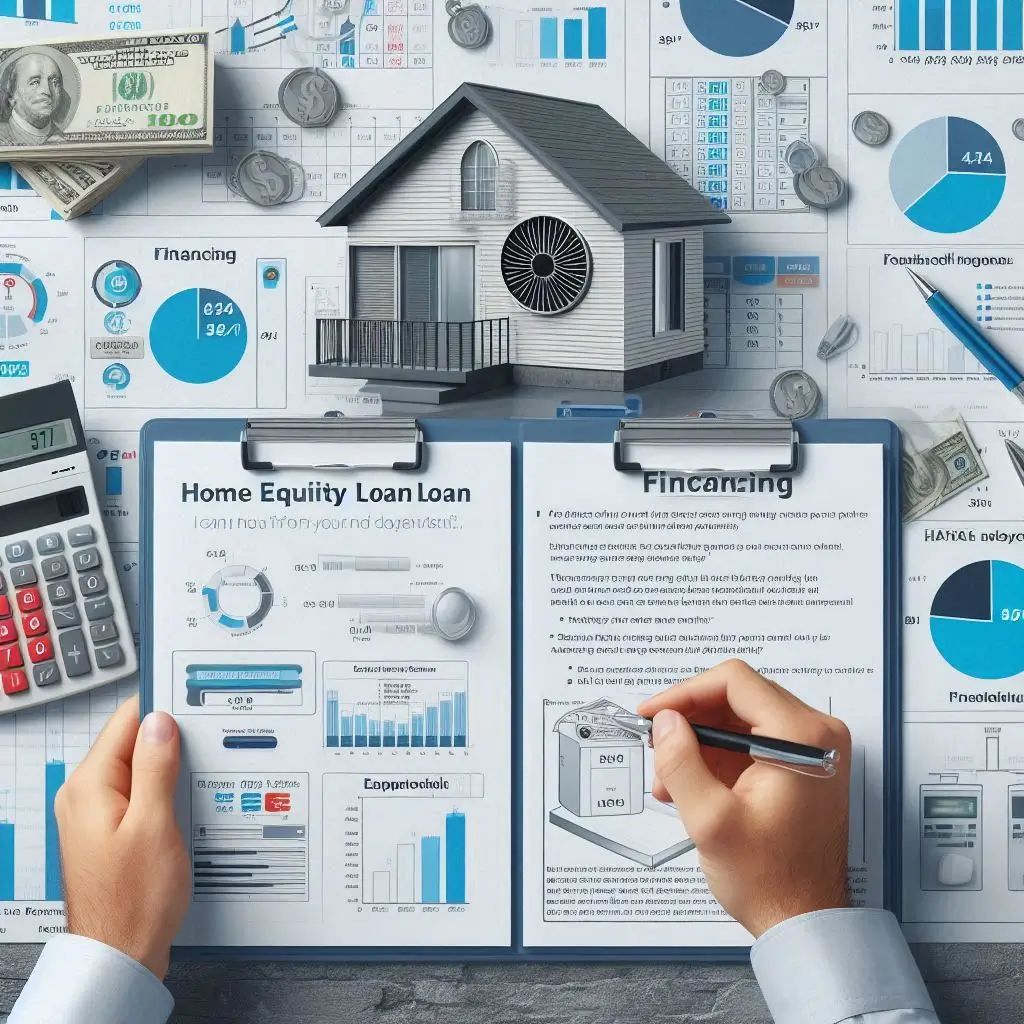
Common HVAC Replacement Myths Debunked
When it comes to replacing your HVAC system, there are many misconceptions that can lead to confusion and potentially costly decisions. Understanding the truth behind these common myths can help you make better choices and ensure you get the best system for your needs without overspending. Let’s debunk two of the most widespread HVAC replacement myths.
Myth #1: The Cheapest System is Always the Best
One of the most common misconceptions in HVAC replacement is that the cheapest system will always be the best choice for your home. While cost is an important factor, focusing solely on the lowest price can lead to poor long-term results.
Why the Cheapest System Isn’t Always the Best:
While opting for the cheapest HVAC system may seem like a good idea at first, it can actually cost you more in the long run. Here’s why:
- Efficiency: Lower-priced systems may not be as energy-efficient as more expensive models. Over time, you could end up paying higher utility bills with a cheaper unit that consumes more energy.
- Durability and Reliability: Budget-friendly systems may not last as long as premium models. While you save on the initial purchase, you could face costly repairs or a full replacement sooner than expected.
- Features and Performance: Cheaper models might not come with advanced features like Wi-Fi connectivity, improved air filtration, or quieter operation. If these features are important to you, going for the cheapest option might leave you disappointed with performance.
The Importance of Balancing Cost and Quality:
It’s crucial to find a system that strikes the right balance between cost and quality. Look for systems with good energy ratings (e.g., Energy Star® certified units), as these can save you money over time. Investing in a high-efficiency system can reduce your utility costs and minimize the need for repairs in the future.

Myth #2: HVAC Replacement Always Means Higher Costs
Another prevalent myth is that HVAC replacement always means higher costs. While it’s true that upgrading to a new system involves some initial expense, it doesn’t necessarily translate to long-term higher costs. In fact, replacing an outdated HVAC system can result in significant savings over time.
The Real Impact of Replacing Your HVAC System:
Replacing your old, inefficient HVAC unit can lead to lower costs in several ways:
- Reduced Energy Bills: Newer HVAC systems are designed to be more energy-efficient. An older system that is 10–15 years old may not be working as efficiently, causing you to spend more on energy. Replacing it with an energy-efficient model can cut down your energy bills significantly.
- Fewer Repairs: As HVAC systems age, they often require more repairs. Frequent breakdowns can be expensive, and at some point, the cost of repairs may exceed the cost of replacement. By replacing your system, you can eliminate these ongoing repair costs.
- Increased Home Value: Installing a new HVAC system can increase the resale value of your home. Prospective buyers may see a newer system as a benefit, which can be particularly appealing in competitive markets.
Factors that Affect the Cost of Replacement:
The cost of HVAC replacement can vary depending on the size of your home, the complexity of installation, and the type of system you choose. However, the total cost is often offset by the savings you’ll enjoy from lower energy consumption and fewer repairs.
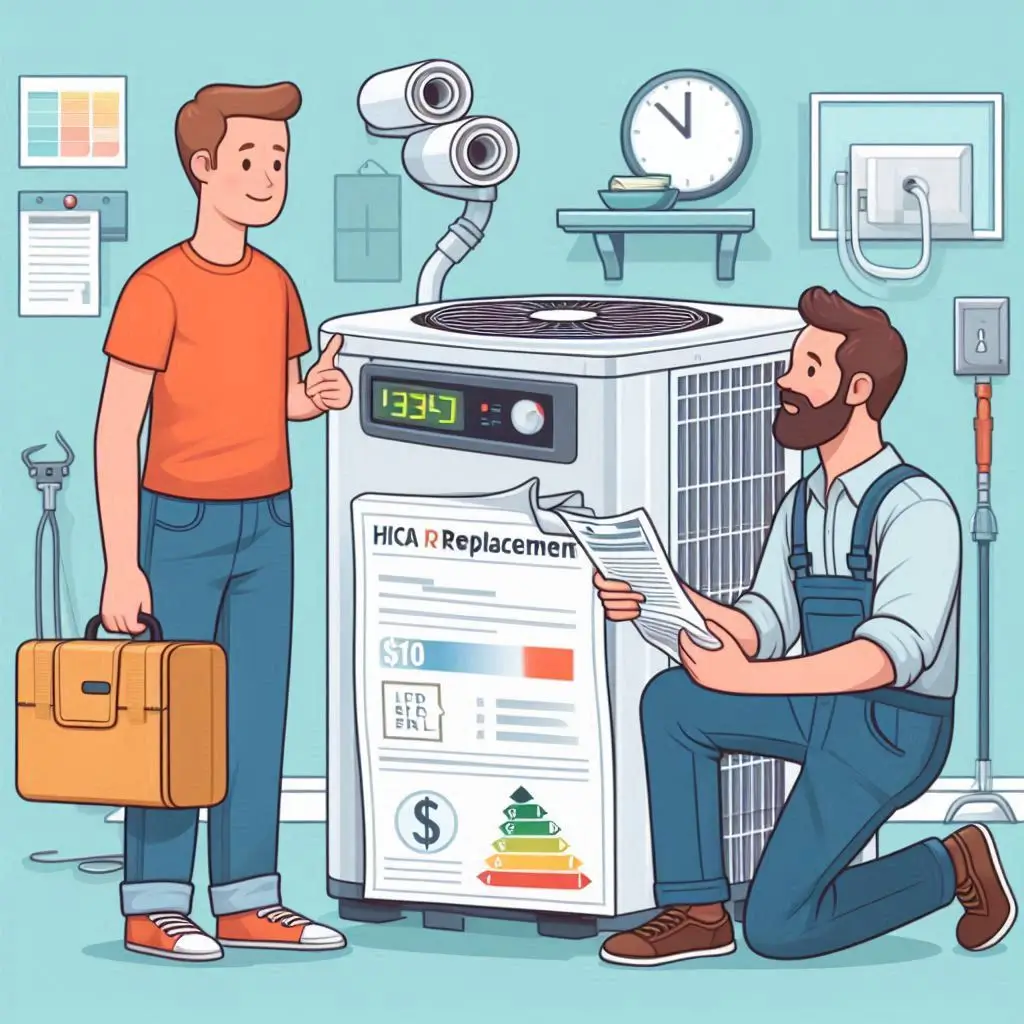
FAQ: HVAC Replacement Cost
Q1: What factors influence the cost of HVAC replacement?
The cost of replacing your HVAC system can vary based on several factors. Here are some key elements that influence the overall cost:
- Size of the Unit: Larger HVAC systems required for bigger homes will generally cost more.
- Efficiency: Higher-efficiency systems are typically more expensive upfront but can save you money in the long run by reducing energy consumption.
- Installation Complexity: If your installation requires modifications to existing ductwork or electrical systems, it could increase the cost.
- Brand and Model: Premium brands with advanced features can raise the price, but they may offer better performance and reliability.

Q2: Is it worth investing in an energy-efficient HVAC system?
Yes, investing in an energy-efficient HVAC system is often worth the extra cost. While the initial price may be higher, an energy-efficient system will:
- Reduce Utility Bills: Energy-efficient systems consume less power, lowering your monthly energy costs.
- Long-Term Savings: With proper maintenance, high-efficiency systems can last longer, offering a better return on investment.
- Environmental Benefits: These systems help reduce your carbon footprint by consuming less energy, which is better for the environment.

Q3: How long does an HVAC system typically last?
An HVAC system can last anywhere from 10 to 20 years, depending on the type, usage, and maintenance. Here’s a breakdown:
- Air Conditioners: Usually last between 12 to 15 years with proper maintenance.
- Furnaces: Can last between 15 to 20 years.
- Heat Pumps: Typically last around 10 to 15 years. To ensure your system lasts its full lifespan, regular maintenance like cleaning filters and checking refrigerant levels is crucial.
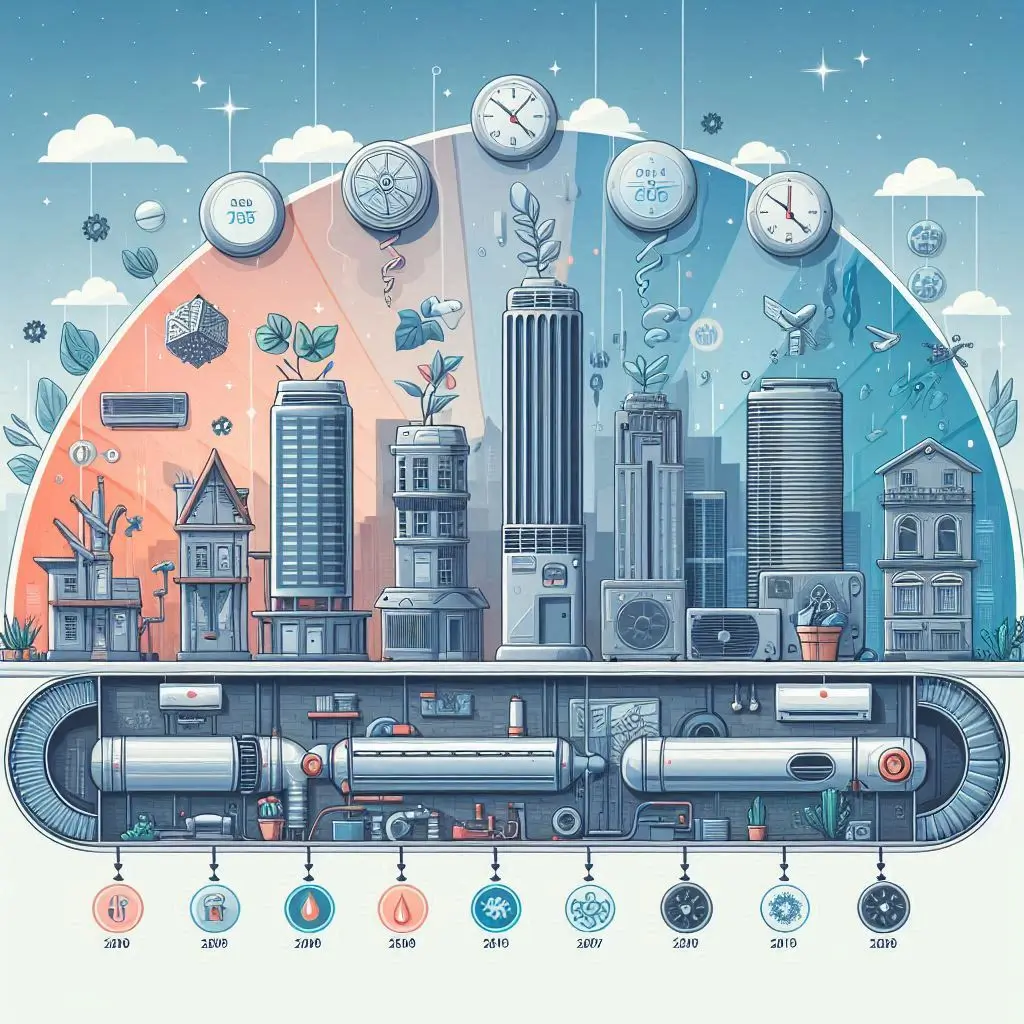
Q4: Can I install a new HVAC system myself to save on costs?
While DIY installation might seem like a way to save money, HVAC systems require specialized knowledge for safe and effective installation. Here’s why professional installation is often the best route:
- Safety: HVAC systems involve electrical wiring, gas lines, and refrigerants, which can be dangerous if not handled properly.
- Efficiency: A professional installer will ensure your system is set up to perform at its best, which could improve efficiency and longevity.
- Warranty: Many HVAC manufacturers require professional installation to honor the warranty, meaning DIY installation could void your system’s coverage.
Q5: What are the typical costs for replacing different HVAC components?
Here’s a general breakdown of costs associated with replacing common HVAC components:
- Air Conditioner: Replacing an air conditioner can cost between $3,000 and $7,000, depending on the brand and size.
- Furnace: Furnace replacement typically costs between $2,500 and $6,500.
- Ductwork: Installing or replacing ductwork can add $1,000 to $5,000 to your overall HVAC replacement cost, depending on the extent of the work needed.
- Heat Pump: Replacing a heat pump can cost between $3,000 and $8,000, depending on the model.
Q6: Are there any incentives or rebates available for replacing my HVAC system?
Yes, many utility companies and government programs offer rebates and incentives for replacing an old HVAC system with a more energy-efficient model. These can significantly offset the costs of your replacement. Some options to explore include:
- Energy Star Rebates: Many manufacturers offer rebates for purchasing Energy Star-certified HVAC systems.
- Federal Tax Credits: You may qualify for a federal tax credit for upgrading to energy-efficient heating and cooling systems.
- Local Utility Programs: Check with your local utility company for any available rebates or financing options that can help with the cost of a new system.
Conclusion:
In conclusion, understanding the factors that influence HVAC replacement costs is essential for making an informed decision when it’s time to replace your system. From considering the size, efficiency, and brand of the unit to factoring in installation complexity, every detail can significantly impact the overall cost. While the initial investment may seem high, choosing an energy-efficient HVAC system can provide long-term savings through lower energy bills and extended system life. Be sure to explore available incentives, rebates, and financing options to reduce upfront costs. By working with a professional HVAC technician and avoiding common myths, you can ensure that your replacement project is both cost-effective and efficient. Investing in the right HVAC system will not only enhance comfort in your home but also help you save money in the years to come.

